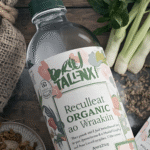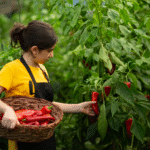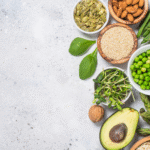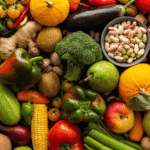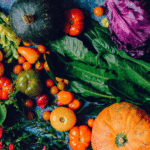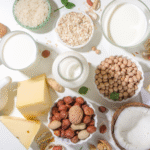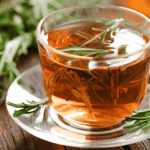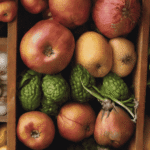When most people think of organic food, farming practices and pesticide-free produce come to mind. But there’s another piece of the puzzle: packaging. Even if food is grown sustainably, wrapping it in plastic undermines its environmental benefits. That’s why sustainable packaging has become a major focus in the organic food industry.
In this blog, we’ll explore what sustainable packaging means, why it’s important, and the innovations shaping the future of organic food packaging.
What is Sustainable Packaging?
Sustainable packaging refers to packaging materials and practices that minimize environmental impact throughout their life cycle. It considers:
-
Materials: Renewable, recyclable, or compostable resources.
-
Production: Energy-efficient and low-emission processes.
-
Use: Protection and preservation of food to reduce waste.
-
End of Life: Recyclability, biodegradability, or reusability.
The goal is to reduce waste, carbon footprint, and reliance on non-renewable plastics.
Why Sustainable Packaging is Important in Organic Food
Alignment with Organic Principles
Organic farming emphasizes health, ecology, fairness, and care. Packaging that harms the environment contradicts these values.
Reducing Plastic Pollution
Plastic packaging contributes to microplastics in oceans and landfills. Choosing biodegradable or compostable packaging keeps organic food true to its mission.
Food Preservation
Proper sustainable packaging extends shelf life and reduces food waste, which is a major source of greenhouse gas emissions.
Consumer Demand
Eco-conscious shoppers expect not just clean food but also clean packaging. Brands that use sustainable options build trust and loyalty.
Types of Sustainable Packaging for Organic Foods
-
Compostable Packaging
-
Made from plant-based materials like cornstarch or sugarcane.
-
Breaks down in compost systems, leaving no toxic residue.
-
-
Biodegradable Plastics
-
Degrade faster than conventional plastics under certain conditions.
-
Example: PLA (polylactic acid) from corn.
-
-
Recyclable Paper & Cardboard
-
Widely recyclable and often made with post-consumer waste.
-
Great for dry goods like grains, pasta, and cereals.
-
-
Glass Jars and Bottles
-
Reusable and infinitely recyclable.
-
Common for sauces, juices, and oils.
-
-
Reusable Packaging Systems
-
Deposit-and-return models where consumers bring back containers.
-
Example: Loop (a global reuse platform for brands).
-
Challenges in Sustainable Packaging
-
Cost: Eco-friendly materials are often more expensive.
-
Infrastructure: Compostable packaging requires proper waste management systems.
-
Performance: Some biodegradable materials may not protect food as well as plastic.
-
Greenwashing: Companies may use misleading claims like “eco-friendly” without certification.
Innovations Driving the Future of Sustainable Packaging
The push for sustainable packaging has sparked a wave of innovative solutions that go far beyond paper and cardboard. Scientists, startups, and major food companies are reimagining how food can be packaged, stored, and delivered — while minimizing environmental impact. Here are some of the most promising innovations shaping the future:
Edible Packaging
-
What it is: Films made from natural materials like seaweed, rice, potato starch, or milk proteins that can be eaten along with the food or dissolve harmlessly in water.
-
Benefits: Eliminates waste entirely, reduces reliance on plastics, and is safe for human consumption.
-
Examples: Seaweed-based packaging for sauces, single-serve coffee or spice packets made from rice paper, and edible straws that replace single-use plastic ones.
Plant-Based Bioplastics
-
What it is: Plastics derived from renewable resources such as corn, sugarcane, cassava, or even agricultural waste. The most common example is PLA (polylactic acid).
-
Benefits: Reduces dependency on petroleum-based plastics, can be compostable under the right conditions, and lowers carbon footprint.
-
Examples: Compostable cutlery, biodegradable food wrappers, and films used for fresh produce. New research is even looking into bioplastics made from food industry byproducts, turning waste into packaging.
Mushroom Packaging
-
What it is: Packaging grown from mycelium (the root structure of mushrooms) and agricultural byproducts. The mycelium grows around the material, creating a strong, lightweight, and fully compostable product.
-
Benefits: Can replace Styrofoam and polystyrene for shipping food or fragile goods. Compostable at home, decomposing in just weeks.
-
Examples: Used for produce trays, protective packaging for organic beverages, and even insulated boxes for meal kits.
Smart Packaging
-
What it is: Packaging embedded with sensors, QR codes, or indicators that monitor freshness, temperature, and spoilage.
-
Benefits: Helps reduce food waste by providing real-time information about food quality. Consumers can tell if a product is still fresh without relying solely on “best before” dates.
-
Examples: Freshness sensors that change color when produce starts to spoil, QR codes that trace the farm-to-table journey, and RFID tags that help retailers manage shelf life.
Circular Packaging Systems
-
What it is: Reusable packaging models where containers are collected, sanitized, and refilled — similar to the old milkman system but modernized.
-
Benefits: Reduces single-use waste, saves resources, and creates a closed-loop system.
-
Examples: Loop, a global platform where consumers buy products in durable, returnable containers, now used by major food brands like Nestlé and Unilever.
Algae-Based & Novel Materials
-
What it is: Cutting-edge materials made from algae, cellulose nanofibers, or even crab shells (chitosan).
-
Benefits: Naturally biodegradable, renewable, and in some cases provide antimicrobial protection to extend food shelf life.
-
Examples: Algae-based water pods for sports events, cellulose packaging for baked goods, and chitosan films that keep fruits fresher for longer.
Key takeaway: The future of packaging is innovative, circular, and nature-inspired. By combining technology with natural materials, the food industry is moving closer to packaging that is not only functional but also regenerative.
How Consumers Can Support Sustainable Packaging
Shifting the food industry toward eco-friendly packaging isn’t just the job of farmers and brands — consumers play a powerful role in driving change. Every purchase sends a message about what kind of packaging is acceptable and what isn’t. Here are some meaningful ways to make an impact:
1. Choose Products with Responsible Packaging
Look for foods sold in recyclable, compostable, or reusable containers. Opt for cardboard, glass, or certified compostable bioplastics instead of single-use plastics. When given the option, always select the product with the least packaging waste.
2. Support Transparent Brands
Seek out companies that are clear about their packaging policies. Brands that publish sustainability reports or display third-party certifications (like FSC for paper or BPI for compostables) are more likely to follow through on their eco-promises. By supporting these businesses, you encourage the rest of the industry to follow suit.
3. Bring Your Own Reusables
Simple habits like carrying reusable bags, jars, and containers cut down on unnecessary packaging waste. Farmers’ markets, bulk food stores, and zero-waste shops often encourage customers to bring their own packaging. Even small swaps (like a reusable produce bag) can add up over time.
4. Recycle and Compost Correctly
Recycling only works if consumers follow local guidelines. Learn which materials your community accepts, and avoid “wish-cycling” (throwing items in the bin hoping they get recycled). If you have access to composting, divert food scraps and compostable packaging from landfills to maximize environmental benefits.
5. Buy in Bulk or Refill
Purchasing in bulk reduces the need for small, single-use packaging. Many stores now offer refill stations for pantry staples, cleaning supplies, and even personal care items. This approach minimizes packaging while saving money.
6. Educate and Influence Others
Share what you know about sustainable packaging with friends and family. Encourage better shopping habits, talk about eco-friendly brands, and raise awareness on social media. Collective consumer pressure is one of the most powerful drivers of industry change.
Comparison of Sustainable Packaging Types
| Packaging Type | Material Source | Key Benefits | Best Use Cases |
|---|---|---|---|
| Compostable Packaging | Plant-based (cornstarch, sugarcane) | Breaks down fully in compost, leaves no toxic residue | Produce bags, single-use cutlery, snack packs |
| Biodegradable Plastics | Corn, cassava, or agricultural waste | Degrades faster than conventional plastics | Food wrappers, beverage cups, produce films |
| Paper & Cardboard | Wood pulp, recycled paper | Widely recyclable, lightweight, affordable | Dry goods, cereals, bakery items |
| Glass Jars/Bottles | Sand, recycled glass | Infinitely recyclable, reusable, excellent preservation | Juices, sauces, oils, pickled foods |
| Reusable Systems | Durable containers (metal, glass) | Closed-loop, reduces single-use waste, cost-effective | Meal kits, bulk foods, delivery services |
| Mushroom Packaging | Mycelium + agricultural byproducts | Fully compostable, strong, replaces Styrofoam | Produce trays, shipping, protective packaging |
Key takeaway: Every choice at the checkout is a vote for the kind of food system we want. By actively choosing sustainable packaging, consumers can reduce waste, cut plastic pollution, and push the organic food industry toward a greener future.
Conclusion
Sustainable packaging is the natural extension of the organic food movement. It ensures that the values of health, environment, and fairness go beyond farming and reach every step of the food system. By supporting brands that invest in eco-friendly packaging, consumers help accelerate the shift toward a more sustainable and responsible food industry.
But the change doesn’t stop there. Sustainable packaging creates a ripple effect:
-
It reduces waste and pollution, protecting the very ecosystems organic farming depends on.
-
It builds consumer trust, showing that companies walk the talk when it comes to sustainability.
-
It encourages innovation, driving the development of new materials and systems that can transform the food industry as a whole.
-
It contributes to global sustainability goals, aligning with broader efforts to combat climate change and reduce reliance on fossil fuels.
Ultimately, sustainable packaging isn’t just about wrapping food differently — it’s about reshaping the future of food systems. By making thoughtful choices, both producers and consumers play a role in creating a cycle that’s not only healthier for people but also kinder to the planet.
The next time you pick up an organic product, don’t just look at what’s inside — look at the packaging too. That small decision is part of a much bigger movement toward a cleaner, greener future.


